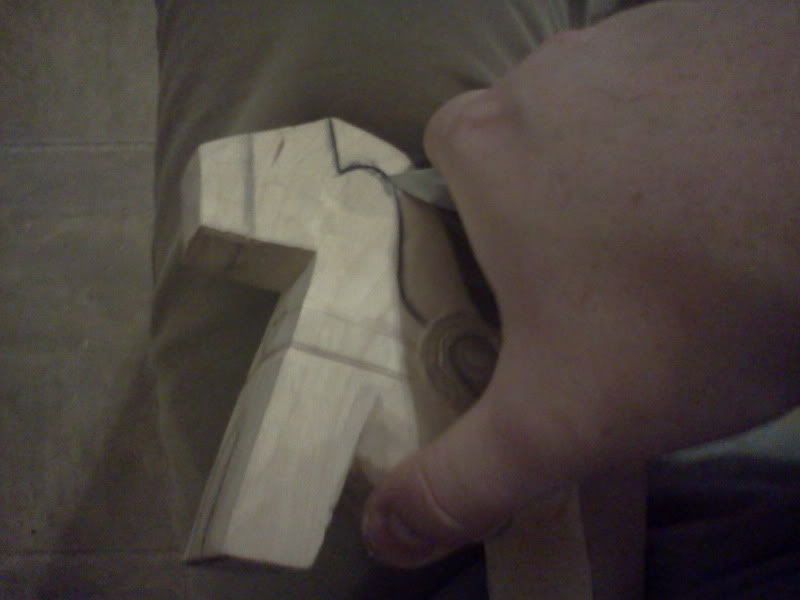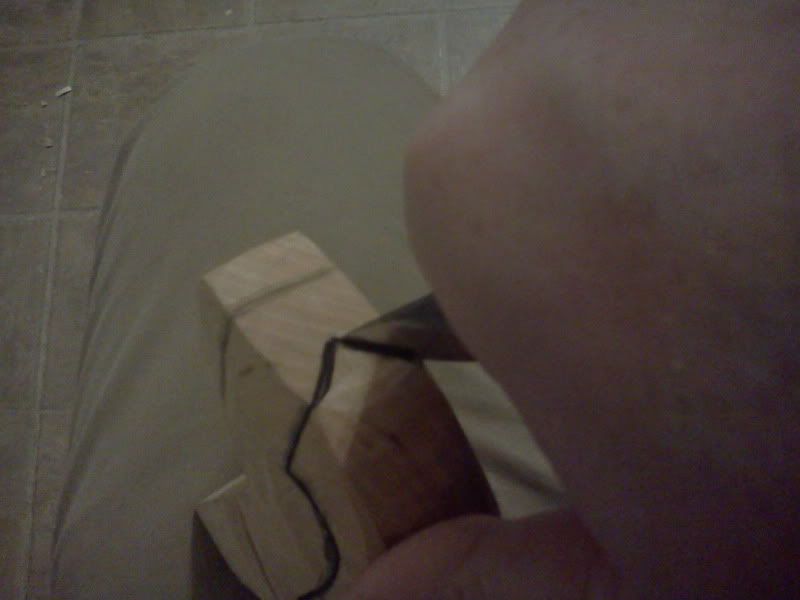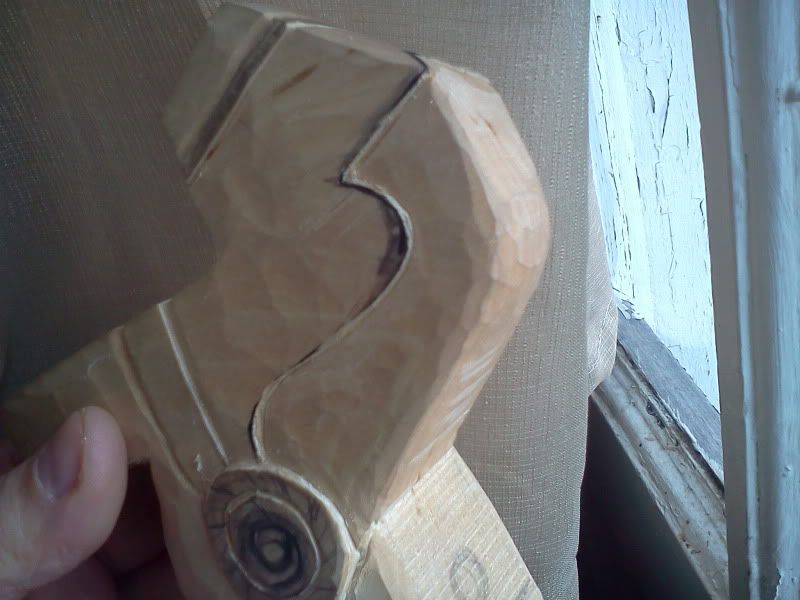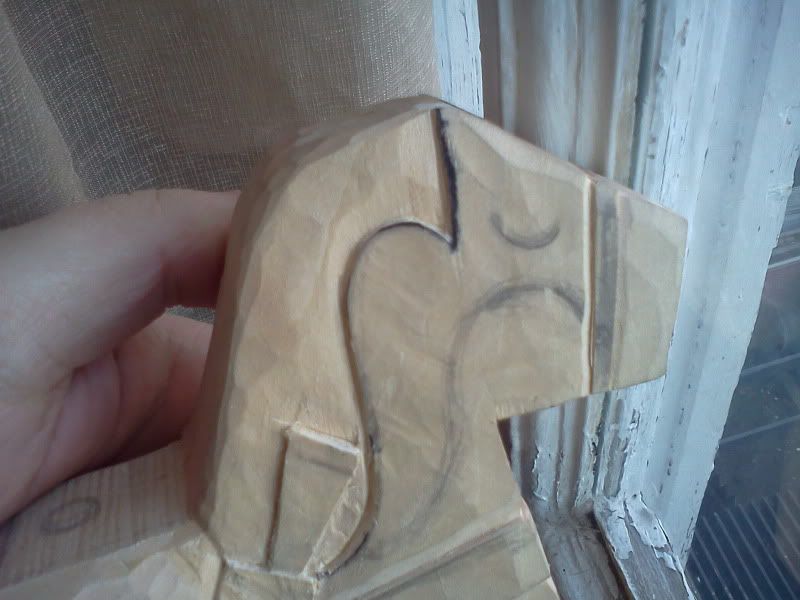
By reader request, here's a look at how I carve the mane for my toy horses. I start by outlining the border with a pencil, then go over it with a black Sharpie marker.
Next, I make a stop cut all along the border. In doing this I use only the tip and lead portion of the blade. On pocket knives this is mostly a natural grip, on larger fixed blade knives such as the Mora, this requires a higher grip that pinches the flat of the blade.

Now I shave up to the stop cut. The depth is subtle, no more than about 1/16", and results in the mane area being lower than the neck and body of the horse. At this point I usually go through and clean up any "fuzzies" and try to make sure the lines are straight and even.

Stop cut/shave towards cut is a good way to remove material in a controlled manner, especially if you're only using a knife. Specialty tools can be used, of course. In fact I'll often go through during the clean up phase and run a v-tool or gouge along a cut. Then again I think pure whittling is done with a knife, so your experience may vary depending on personal preference.

On a side note, I'd like to suggest you check out the Belfast Bushcraft Blog. Great photos, updates, and wilderness observations from an Irish outdoorsman.
(sorry for the delay, Abo!)

Excellent tutorial my friend. thank you for that and for the big up too.
ReplyDeleteAbo